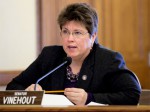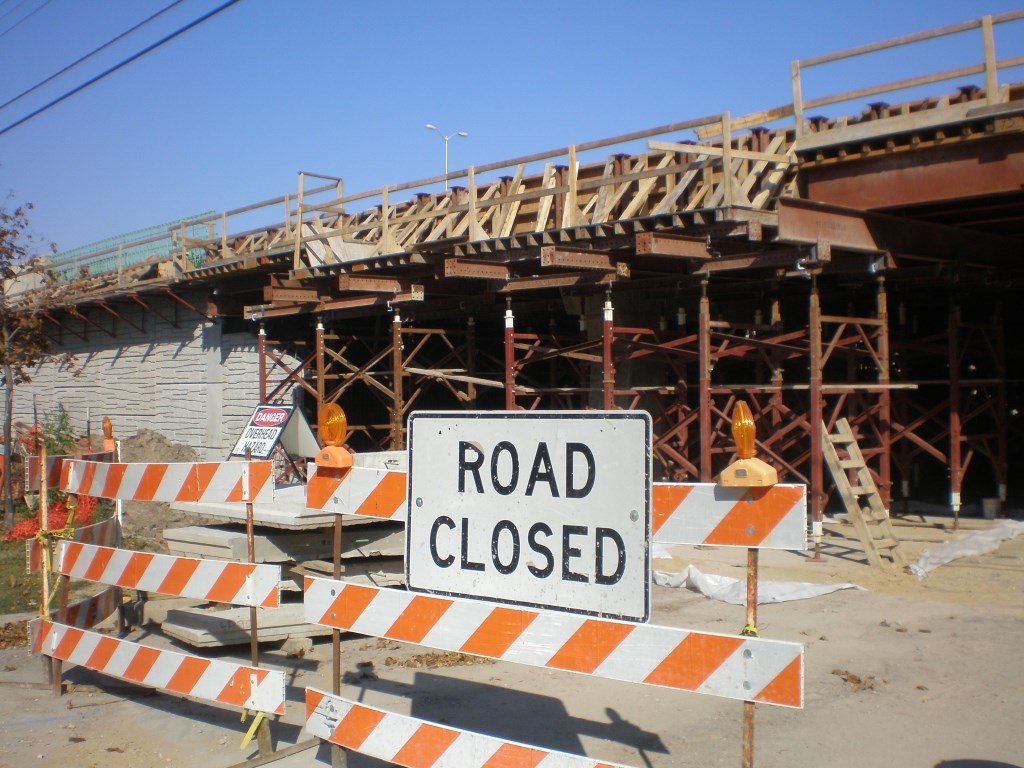Who Is Minding DOT’s Spending?
Cost overruns, lack of transparency and oversight has led to huge transportation costs.
“Let me see how much you spent,” my mother said when I returned from the store. As the oldest of five children, I was often sent to the store to buy groceries. When I returned home, my mother checked the grocery bag, the receipt and counted the change.
I knew I could buy no more than exactly what was on her list. She knew how much everything should cost. I needed to answer for every penny I spent. Everything needed to add up.
This simple accountability seems to be completely missing at our Department of transportation (DOT).
Auditors looked at spending on highways and found actual spending on individual projects much greater than the cost estimates provided to the Legislature at enumeration, which means legislative approval of the project. In some cases, actual costs for highways were four times more than the approved estimates.
Auditors examined highway projects completed from January 2006 to December 2015. At enumeration, cost estimates for none of the 19 completed projects took into account the increases in inflation during the life of the project. In every completed major highway project reviewed, actual costs were more than the cost estimates provided at enumeration. Over half of the projects had actual costs that were more than DOUBLE the cost estimates at enumeration. Two projects – including I-94 to Chippewa Falls were more than FOUR TIMES the cost estimates provided at enumeration.
The I-94 to Chippewa Falls project was enumerated in 1991 and the last bills were paid in 2011. Why did this information not become part of a public discussion before now?
Part of the answer lies in a lack of transparency and oversight.
This audit, just as prior audits, illuminated problems with missing paperwork and poor oversight. Because of prior audit findings, legislators changed the law to require DOT to report clear information on actual compared to budgeted costs.
Despite the new law, DOT did not provide complete information to the oversight body – the Transportation Projects Commission, which is made up of political appointees. The law required regular reporting by DOT to the Commission.
Auditors also examined current DOT highway projects and found similar problems. In every project reviewed, cost estimates in August 2016 were higher than the cost estimates at enumeration. Of the sixteen major ongoing highway projects, eight are more than double the cost estimates at enumeration, with one – Highway 10 from Marshfield to Appleton – over four times greater.
Why have project cost estimates increased so much?
Auditors mention two reasons: unexpected costs and inflation. DOT did not sufficiently consider the effects of inflation. They also made major errors (my words, not the auditors) in their cost estimates due to unexpected cost increases.
In planning construction on I-39/90 from Madison to the Stateline, DOT used five-year-old traffic counts. They updated the project with new counts in 2012. DOT then decided to increase pavement thickness and add two more additional lanes near Janesville. DOT bought additional real estate, moved power lines they had not anticipated, increased the shoulder width and provided alternate routes to avoid delays and accidents. These changes explained about three-quarters of the nearly half a billion of the increase in the project’s cost estimate.
All of these changes may appear reasonable. However, serious problems exist in the system when cost estimates increase from about $700 million to over $1.2 billion with no public accountability or legislative authority.
Auditors recommend legislators and the public are kept better informed. In its report, the LAB makes 45 separate recommendations. In response to the audit, Speaker Robin Vos called on DOT to provide details related to all DOT projects and actual cost.
But how is it the Department of Transportation has paid more –sometimes four times more – on projects than cost estimates provided at enumeration?
There are more details in the audit, which provide insight into the current budget problems facing the state as we contemplate the next budget. I will be reporting on these details and the activities of the audit committee. This is our opportunity as thoughtful citizens to say, “Let me see how much you spent.”
Sen. Kathleen Vinehout, D-Alma, is a member of the Wisconsin state Senate.
Op-Ed
-
Wisconsin Candidates Decry Money in Politics, Plan to Raise Tons of It
 Dec 15th, 2025 by Ruth Conniff
Dec 15th, 2025 by Ruth Conniff
-
Trump Left Contraceptives to Rot; Women Pay the Price
 Dec 8th, 2025 by Dr. Shefaali Sharma
Dec 8th, 2025 by Dr. Shefaali Sharma
-
Why the Common Council’s Amended Budget is Good Policy for Milwaukee
 Nov 20th, 2025 by Alds. Marina Dimitrijevic and Russell W. Stamper, II
Nov 20th, 2025 by Alds. Marina Dimitrijevic and Russell W. Stamper, II
Transportation
-
Congestion Pricing Cuts Air Pollution in New York City
 Dec 14th, 2025 by Jeff Wood
Dec 14th, 2025 by Jeff Wood
-
FTA Tells Milwaukee to Crack Down on Fare Evasion — Even Where Fares Don’t Exist
 Dec 12th, 2025 by Graham Kilmer
Dec 12th, 2025 by Graham Kilmer
-
Will GOGO’s Bus Service Ever Get Going?
 Dec 9th, 2025 by Jeramey Jannene
Dec 9th, 2025 by Jeramey Jannene





















My questions are, who authorized the changes in these projects and where did the money to pay for them come from?
If Mom said nothing should b purchased that isn’t on the list, then we know mom was on the job.Who was checking the list and counting the change?
Yes Jeffrey has part of the question CONTRACTS these contracts are give to the low bidder and games are played there as the Fed’s pointed out recently that WDOT prolongs projects over a number of years so that local contractors have steady work rather that the State realizing the benefit of the money spent in a timely manner. Yes how are the contracts altered and by whom. Peace
I agree with Jeffrey. Where did the extra $500 million come from, and who spent this money without legislative approval? “Despite the new law, DOT did not provide complete information to the oversight body.” There should be televised hearings.
What is the costs and criteria of installing a turnabout? I have seen them surrounded by corn fields and just shake my head. I have discussed my observations with friends and they have noticed and wondered the same thing. I am dumbfounded by decisions the DOT has been making and it seems to me that simplicity of design (for user friendliness) and budget concerns are at the bottom of the list. In the meantime our roads continue to deteriorate with no discussion on repairs.